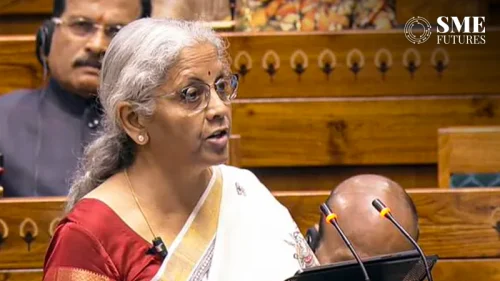Real estate is always considered a long-term investment as it typically provides stability in the investment portfolio and only appreciates with time, real estate services company Anarock said.
It added that the physical nature of such assets, unlike stocks, also ensures limited wealth erosion. Investments are aimed at maximum returns and yield those when chosen wisely.
While gold has primarily remained a favourite investment for Indian households due to its liquidity and investment size flexibility and equities are highly volatile and easily impacted by social, political, and economic upheavals, real estate is hence always considered a long-term investment that gives a portfolio the much-needed stability, it said.
Also Read: RBI to improve infrastructure for digital banking in country
From December 2019 – March 2020, the onset of the pandemic, Sensex lost 29 per cent in value, whereas gold rose 4 per cent. Residential real estate, however, stood still with prices remaining steady.
“Residential real estate prices in India remained stable as there were uncertainties about the execution, development, and sales of the projects. All sectors, including real estate, were challenged on how to navigate the tempest,” Anarock said in a statement on October 17th 2022.
Then coming to Covid’s lethal second wave in India during April 2021 – June 2021, Sensex and gold appreciated 6 per cent each, while residential real estate again held its ground and remained largely steady.
“The stock markets exhibited resilience and investors again became active as many scrips were available at attractive valuations. During this period, Sensex regained a growth trajectory after a minor correction of 1 per cent in April 2021 compared to the previous month. Gold, though lower than the previous peak, appreciated again, while residential real estate remained stable.”
For the record, the second wave hit India hard, creating an acute healthcare crisis that claimed many lives and led to the re-enforcement of lockdowns. “In all this turmoil, residential real estate has exhibited exceptional resilience and is now on a growth path. The weighted average price across the top seven cities has appreciated,” said Prashant Thakur, Senior Director and Head at Anarock group.
Also Read: India’s exports rose to $61 billion in September
He further added, ‘While price is a function of supply and demand, the favourable change of sales exceeding supply continued even during the pandemic. Analysis shows that the available housing inventory is on a steady decline.”
Cut to the present day, all assets have exceeded their pre-pandemic levels. Compared to the September 2019 levels, the BSE Sensex has recorded an appreciation of 52 per cent, gold prices have increased by 34 per cent, and residential real estate by 9 per cent.
These readings, it said, indicate that the worst impact of the pandemic is behind us. Economic growth, despite global uncertainties and the headwind of rising inflation, is likely to be robust.
Thakur said, “The COVID-19 pandemic reaffirmed the necessity of owning homes since it provides more than mere accommodation – it also gives security in times of generalized financial instability.”
“Gold and stocks, on the other hand, are volatile and subject to market risks,” he added. Currently, real estate activities are in full swing and both demand and supply are increasing rapidly.
As residential launches increased by 76 per cent and sales by 61 per cent in H1 2022 compared to the pre-pandemic levels of H2 2019, housing is all set to witness further traction during the festive season, leading to further price appreciation, it said in conclusion.











